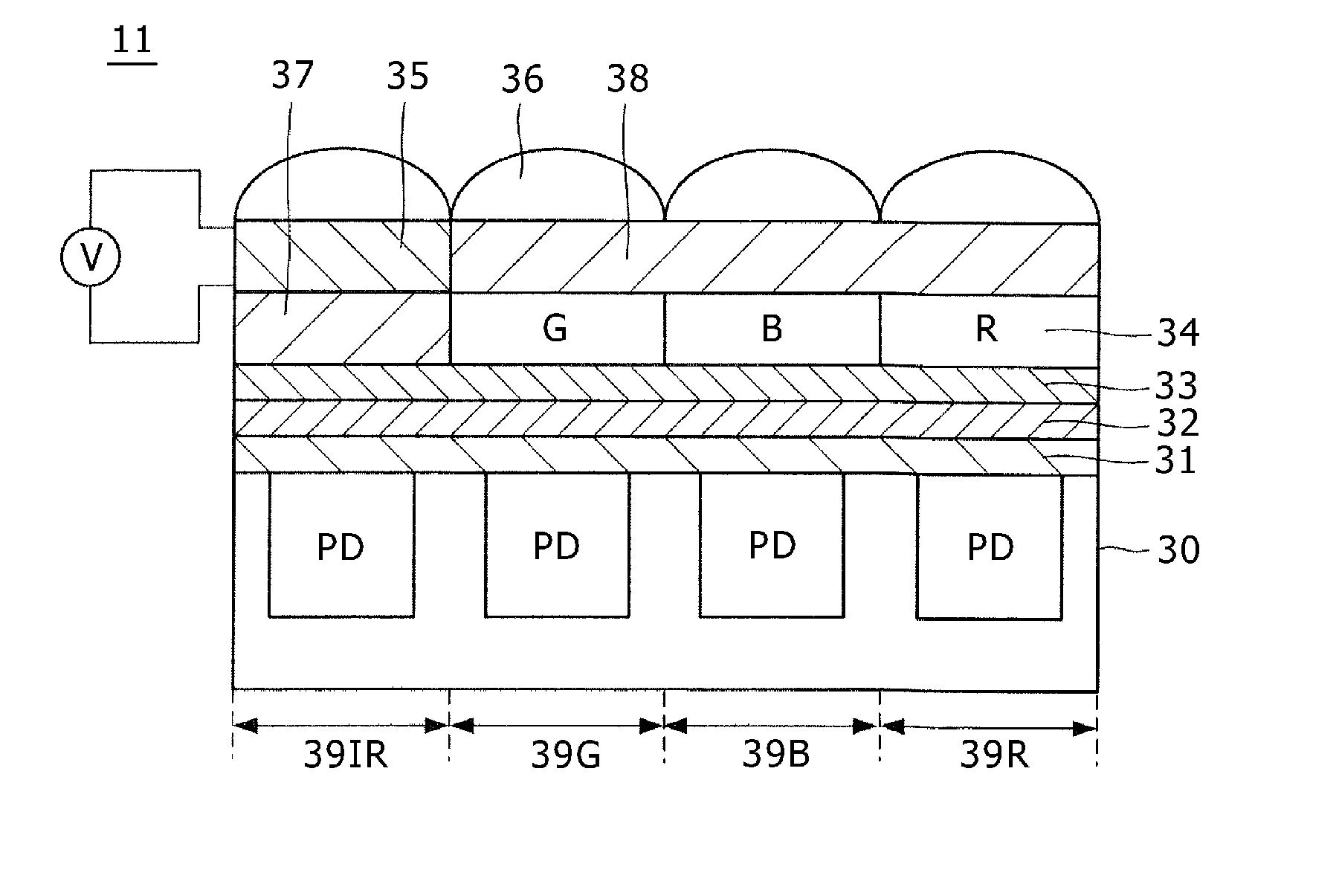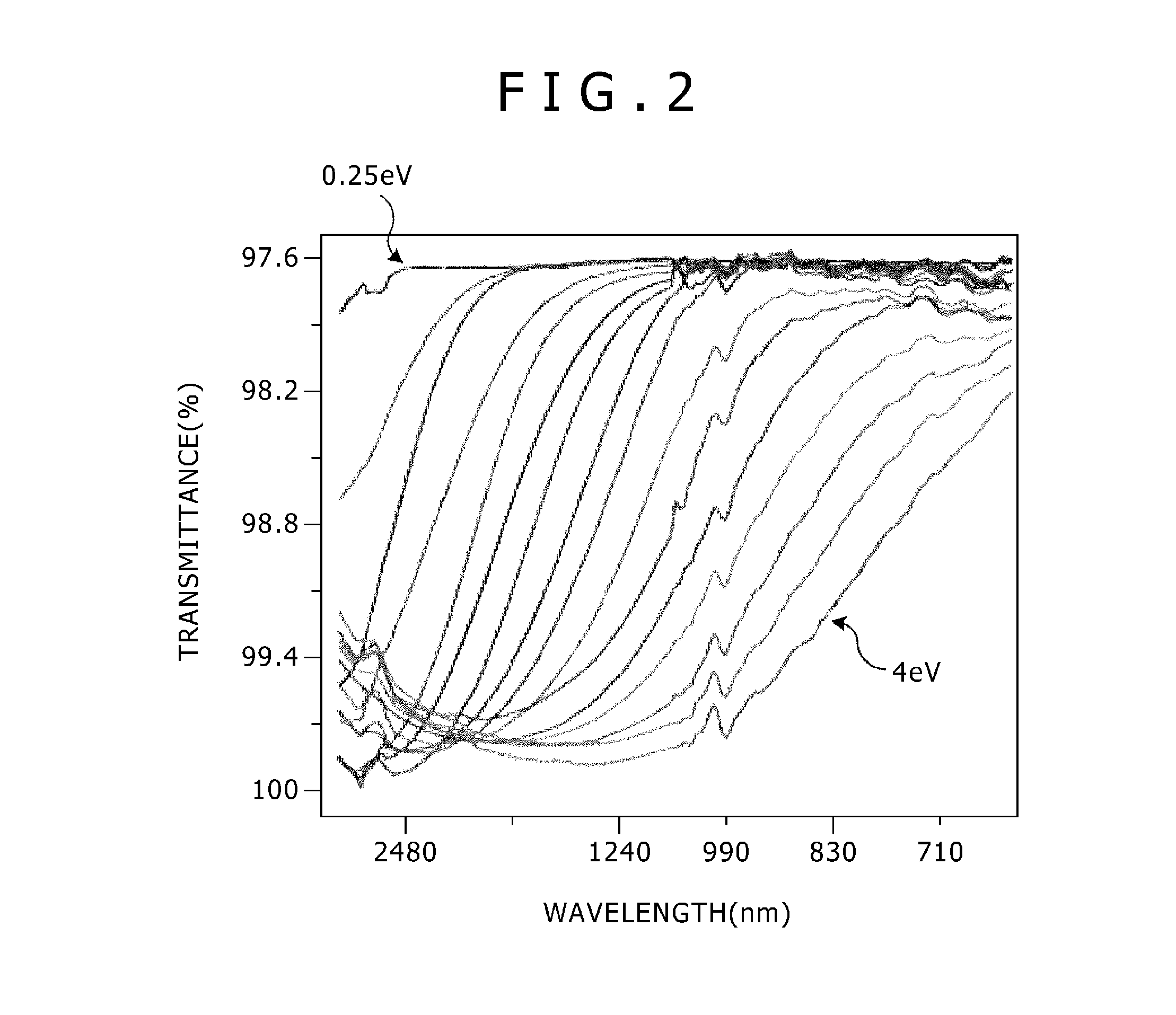Solid-state imagingelement, calibration method of solid-state imagingelement, shutter device, and electronic apparatus
a technology of solid-state imaging and calibration method, which is applied in the direction of radio frequency control devices, instruments, television systems, etc., can solve the problems of large wavelength errors, difficult control of wavelength variations, and inability to freely modulate the wavelength of light that can pass through the dielectric laminated film
- Summary
- Abstract
- Description
- Claims
- Application Information
AI Technical Summary
Benefits of technology
Problems solved by technology
Method used
Image
Examples
first embodiment
Example of Solid-State Imaging Element
[0054]FIG. 3 is a schematic block diagram showing the whole of a solid-state imaging element 11 according to a first embodiment of the present disclosure. The solid-state imaging element 11 according to the example of the present embodiment includes a pixel section 13 formed by a plurality of pixels 12 arranged on a substrate 21 made of silicon, a vertical driving circuit 14, column signal processing circuits 15, a horizontal driving circuit 16, an output circuit 17, a control circuit 18, and the like. The pixels 12 include a photoelectric conversion section formed by a photodiode, a charge accumulating capacitance section, and a plurality of MOS transistors, and the plurality of pixels 12 are arranged regularly in the form of a two-dimensional array on the substrate 21. The MOS transistors forming the pixels 12 may be four MOS transistors, that is, a transfer transistor, a reset transistor, a selecting transistor, and an amplifying transistor, ...
first modification
[First Modification]
[0084]FIG. 9 is a schematic sectional view of four pixels of a solid-state imaging element 41 according to the first modification.
[0085]In FIG. 9, parts corresponding to those of FIG. 4 are identified by the same reference symbols, and repeated description thereof will be omitted. As shown in FIG. 9, the solid-state imaging element 41 according to the modification has an IR cutoff filter 42 over a red pixel 39R, a green pixel 39G, and a blue pixel 39B other than an IR pixel 39IR.
[0086]The solid-state imaging element 41 cuts off light of wavelengths in the infrared region in the red pixel 39R, the green pixel 39G, and the blue pixel 39B provided with the IR cutoff filter 42. Therefore, signal components obtained in the visible light pixels are signal components resulting from light in the visible light region, but include a noise component ΔE resulting from a dark current.
[0087]Accordingly, the solid-state imaging element 41 also corrects dark current nonuniformit...
second modification
[Second Modification]
[0092]The nano-carbon laminated film can change a wavelength region of light that the nano-carbon laminated film can transmit (in which region transmittance can be modulated) and light transmittance thereof according to the constitution and material of the nano-carbon laminated film. FIG. 10 is a schematic sectional view of a nano-carbon laminated film according to a second modification. As shown in FIG. 10, the nano-carbon laminated film 45 includes a first electrode 46, a dielectric layer 47, and a second electrode 48.
[0093]The first electrode 46 and the second electrode 48 are each formed by one nano-carbon layer or a plurality of nano-carbon layers. In addition, in the second modification, graphene, for example, is used as the nano-carbon layers forming the first electrode 46 and the second electrode 48. A voltage power supply V is connected to the first electrode 46 and the second electrode 48 via wiring.
[0094]The dielectric layer 47 is provided between the...
PUM
 Login to View More
Login to View More Abstract
Description
Claims
Application Information
 Login to View More
Login to View More - R&D
- Intellectual Property
- Life Sciences
- Materials
- Tech Scout
- Unparalleled Data Quality
- Higher Quality Content
- 60% Fewer Hallucinations
Browse by: Latest US Patents, China's latest patents, Technical Efficacy Thesaurus, Application Domain, Technology Topic, Popular Technical Reports.
© 2025 PatSnap. All rights reserved.Legal|Privacy policy|Modern Slavery Act Transparency Statement|Sitemap|About US| Contact US: help@patsnap.com



